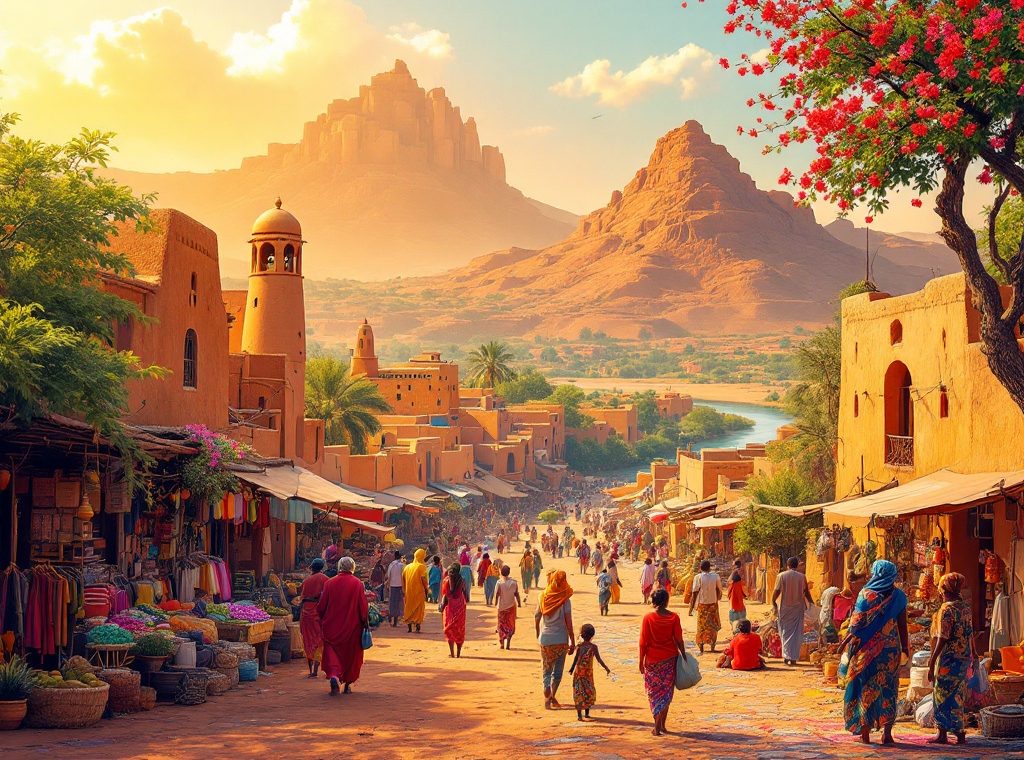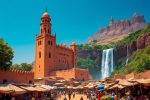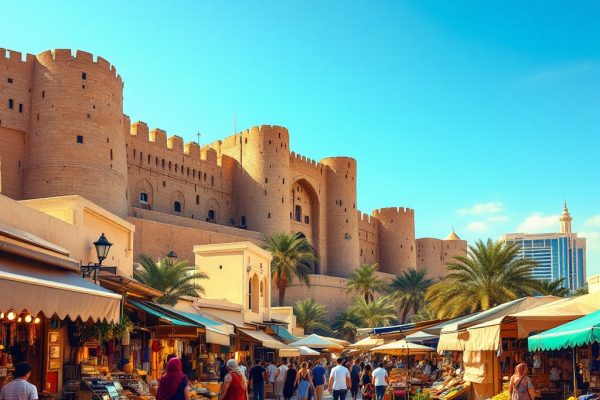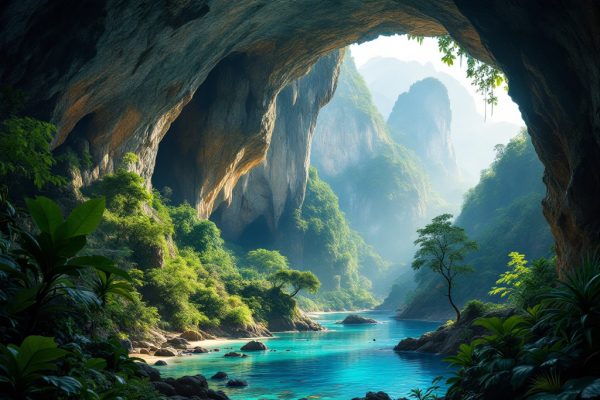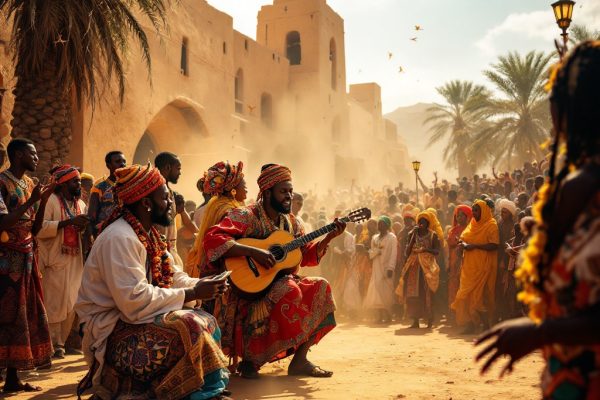Mali Tourist Places: The Best Destinations for Trips in Spring
Dreaming of a unique spring getaway? Discover Mali, a land of ancient cities and vibrant cultures. Explore the bustling markets of Bamako, journey to the historic Timbuktu, and marvel at Djenné’s mud-brick architecture. From the Bandiagara Escarpment to the Niger River, adventure awaits. Experience Mali’s magic this spring! Read on to plan your unforgettable trip.
Important information
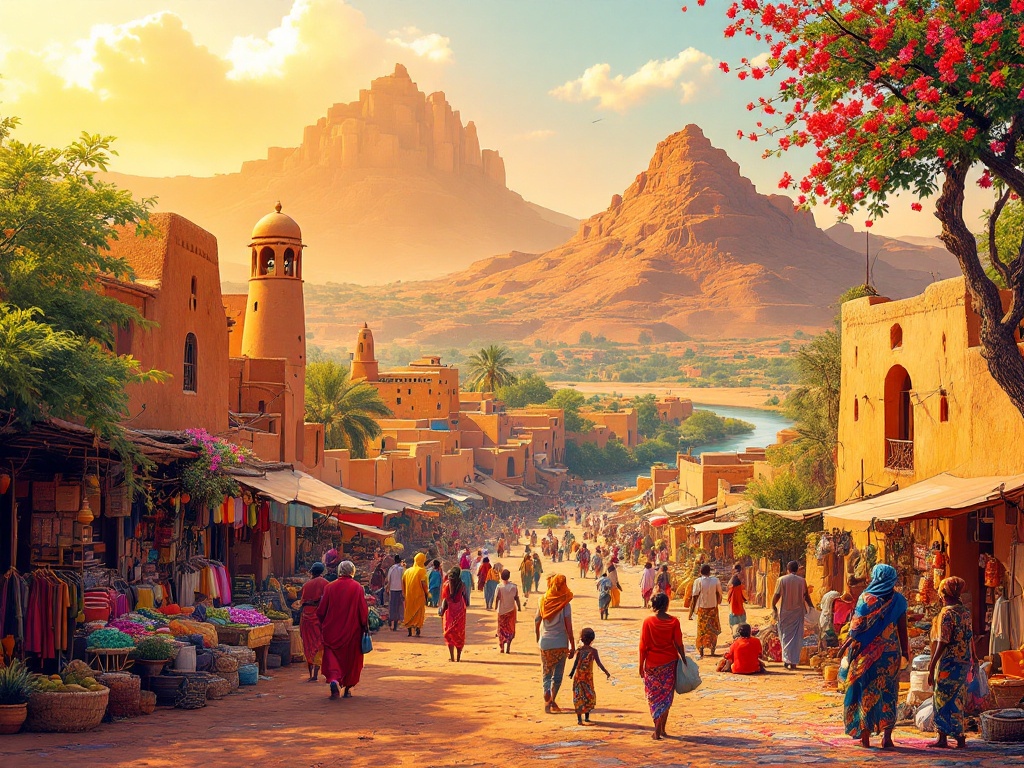
- Spring offers pleasant weather for exploring Mali’s diverse culture and landscapes.
- Bamako, the capital, serves as a hub for accessing key sites like Timbuktu, Djenné, and Dogon Country.
- Major attractions include the Great Mosque of Djenné (world’s largest mud-brick structure), the Bandiagara Cliffs, and Timbuktu’s historic mosques.
- Visitors can experience traditional village life, bustling markets, and vibrant music, especially in Bamako.
- The Niger River offers opportunities for scenic boat trips and cultural immersion.
Mali Tourist Places: The Best Destinations for Trips in Spring
Mali is a fantastic spring destination offering diverse experiences. Bamako, the capital, is a vibrant city. Explore its bustling markets and discover its rich culture. Timbuktu, steeped in history, whispers tales of the past. Djenné, an architectural marvel, boasts unique mud-brick buildings. Don’t miss the Great Mosque. Beyond Mali’s cities lie even more adventures.
Discover Mali’s Cultural Gems
Bamako, the vibrant capital, invites you to explore its bustling markets and rich culture. Timbuktu, steeped in history, whispers tales of ancient times. Djenné showcases unique mud-brick architecture, including the magnificent Great Mosque.
Explore Nature’s Wonders
The Bandiagara Escarpment in Dogon Country offers breathtaking views of villages clinging to cliffs and a fascinating glimpse into local culture. A boat trip along the Niger River reveals stunning landscapes. Wildlife enthusiasts will appreciate Boucle du Baoulé National Park.
Uncover Historical Treasures
Gao echoes Mali’s ancient past through its historical sites. Mopti, a bustling port city on the Niger River, captivates with its scenic beauty.
Experience Artistic Traditions
Segou, a cultural hub, is home to a renowned traditional painting institute. Mali truly offers something for every traveler.
Why Spring is the Ideal Time to Visit Mali
Experience the magic of Mali this spring. Pleasant weather makes it ideal for exploring the country’s rich culture and breathtaking landscapes. Springtime also brings vibrant festivals, enriching any visit. The comfortable climate enhances sightseeing, allowing you to fully appreciate Mali’s diverse offerings.
Traveling to Bamako: The Gateway to Mali
Bamako, Mali’s vibrant capital, is the ideal starting point for any Malian adventure. From this bustling hub, travelers can easily explore the country’s rich cultural and historical tapestry. This includes iconic sites like Segou, Mopti, Djenné, Timbuktu, and the captivating Dogon Country. Within Bamako itself, attractions like the Grand Marche and the Musée National du Mali offer fascinating glimpses into Malian life and heritage. Transportation from Bamako is readily available, with options ranging from 4×4 vehicles for road travel to scenic boat trips along the Niger River.
Bamako’s Markets
Bamako’s markets pulse with energy. The Grand Marche, a central marketplace, offers a kaleidoscope of goods, from aromatic spices and intricate crafts to everyday necessities. It’s a perfect place to experience the rhythm of local commerce. For a unique cultural immersion, explore Bamako’s traditional medicine market, where herbal remedies and ancient healing practices are showcased.
Musée National du Mali
The Musée National du Mali is a treasure trove of Malian history, art, and culture. Its rich collection includes captivating sculptures, masks, textiles, and archaeological discoveries, offering invaluable insights into the country’s heritage. This museum is a must-see for any visitor.
Bamako offers a wide range of accommodations to suit every budget and preference, from budget-friendly guesthouses to luxurious international hotel chains. For convenient access to attractions and transportation, consider staying near the city center.
Visit Bamako Markets: Grand Marche and Traditional Medicine Market
Bamako’s Grand Marche, a bustling central market, vibrates with Malian life. It offers a wide array of goods, from fresh produce and intricate crafts to colorful clothing. For a truly unique experience, venture into the Traditional Medicine Market. This fascinating place provides a captivating glimpse into local healing practices and Malian culture. Both markets offer rich cultural insights and are must-sees for any visitor to Bamako.
Musee National du Mali: Exploring Historical Artifacts
Explore Mali’s captivating history at the National Museum in Bamako. Discover a remarkable collection of artifacts, from vibrant textiles and intricate pottery to ancient manuscripts. Admire the beautiful bogolanfini mud cloths, showcasing traditional dyeing techniques. Examine the pottery, revealing ancient craftsmanship. Delve into the manuscripts, offering insights into Mali’s intellectual past. The museum provides a journey through Mali’s artistic and archaeological discoveries, making it a must-see for anyone interested in Malian culture.
Accommodations and Best Hotels for Your Stay
Planning a trip to Bamako? Here are some hotel recommendations:
Luxury Stay
For a luxurious stay with breathtaking city views, consider the Radisson Blu.
Business Travel
Business travelers will appreciate Laico Bamako’s comfortable rooms and top-notch conference facilities.
Convenient Location
The conveniently located Azalaï Hôtel Bamako also offers comfortable accommodations.
Budget-Friendly
Budget-conscious travelers should check out the affordable Residence Le Reve.
Top Attractions in Mali
Embark on an unforgettable journey through Mali, starting with the breathtaking Bandiagara Cliffs, a UNESCO World Heritage site. Hike among the sandstone escarpments and discover ancient Dogon villages, immersing yourself in their fascinating culture and unique architecture.Next, marvel at the architectural wonder of the Great Mosque in Djenné, the world’s largest mud-brick structure and a prominent center of Islamic learning.Continue your exploration in Timbuktu and Gao, uncovering their rich history as vibrant hubs of trade and Islamic scholarship. Explore historic mosques, libraries, and other cultural gems.Discover Mopti, Mali’s bustling river port at the confluence of the Niger and Bani rivers, and gateway to the inner Niger Delta.Finally, experience the rich cultural heritage of Segou, including the renowned Segou Painting Institute, a champion of local art and traditional Malian arts workshops.
Exploring the Bandiagara Cliffs and Dogon Country
Embark on an unforgettable journey through Mali’s Bandiagara Escarpment, hiking past ancient Dogon villages carved into the cliffs. The breathtaking views and unique geological formations will captivate any traveler seeking scenic landscapes. Immerse yourself in Dogon culture, experiencing their distinctive customs and architecture firsthand.
The Architectural Marvels of Djenne and the Great Mosque
Djenné, a UNESCO World Heritage site, is renowned for its distinctive earthen architecture, especially the Great Mosque. This impressive structure, the world’s largest mud-brick building, showcases the community’s remarkable skill and profound religious devotion.
Discovering the Historic Sites of Timbuktu and Gao
Timbuktu, a UNESCO World Heritage site, is renowned for its stunning Djinguereber Mosque, along with the Sankore Madrasah and Sidi Yahia Mosque. Each structure reveals a piece of the city’s rich history. Further east, Gao boasts its own historical significance with the Tomb of Askia, another World Heritage site, marking its past as a crucial trading hub and powerful imperial capital. Both cities offer captivating insights into the trans-Saharan trade and the region’s vibrant intellectual and spiritual legacy.
Mopti: The Strategic River Port of Mali
Mopti, a bustling commercial hub in Mali, thrives as a major port on the Niger River. This strategic location makes it a crucial transportation link for both goods and people. Travelers are drawn to Mopti’s vibrant markets, showcasing the trade that fuels the local economy. The city also serves as a gateway to the inner Niger Delta and connects to other Malian regions.
Segou’s Cultural Heritage and Traditional Painting Institute
Segou’s Traditional Painting Institute is a vital cultural center dedicated to celebrating Mali’s vibrant artistic traditions and showcasing its rich heritage.
Nature & Wildlife Tours in Mali
Explore the diverse landscapes of West Africa. Discover Boucle du Baoulé National Park, home to exotic wildlife, including the West African manatee. Birdwatchers will appreciate the abundant avian species. For a thrilling adventure, journey to the Sahara Desert. Trek across the vast sand dunes on camelback and experience the unique cultures of nomadic peoples.
Boucle du Baoulé National Park: A Haven for Exotic Wildlife
Explore the stunning Boucle du Baoulé National Park. Discover scenic trails rich with fascinating wildlife, from diverse plant life to a variety of animal species. It’s an unforgettable adventure for nature lovers.
Adventure Tourism in the Sahara Desert
Experience the magic of the Sahara Desert with a thrilling camel trek across its vast expanse, camping under a breathtaking starry sky. For the adventurous, exhilarating four-wheel drive excursions offer a faster pace, riding across dunes and into hidden oases. Immerse yourself in the rich culture of the Tuareg people, discovering their unique traditions and way of life. The Sahara Desert offers an unforgettable blend of adventure and cultural immersion.
Religious and Cultural Landmarks
Timbuktu’s Djinguereber Mosque, a UNESCO World Heritage site, is a breathtaking example of Sudano-Sahelian architecture. Constructed in the 14th century, it continues to serve as a vibrant center for Islamic scholarship.
Further east, in Gao, the Tomb of Askia, another World Heritage site, stands as a testament to the powerful Songhai emperor, Askia Mohammad I. This pyramidal structure showcases the impressive architectural traditions of Sahelian funerary monuments.
Mali’s cultural landscape is incredibly diverse, encompassing the unique traditions of groups like the Dogon, Bambara, and Tuareg. In traditional Malian villages, agriculture is central to life, complemented by the rich tapestry of music and storytelling. Visitors to these villages can immerse themselves in the authenticity of Malian culture.
The Djinguereber Mosque and Tomb of Askia
Gao, Mali, houses two UNESCO World Heritage sites reflecting the region’s history: the Djinguereber Mosque and the Tomb of Askia. The Djinguereber Mosque showcases traditional Sudano-Sahelian architecture, while the Tomb of Askia represents the 15th-century Sahelian architectural style.
Malian Culture and Traditional Village Life
Malian culture is deeply rooted in community and tradition, where family, village life, and shared customs are central. Music, dance, storytelling, and elaborate ceremonies are vibrant expressions of these traditions. The Dogon people’s masked dances are a striking example. Throughout the country, agricultural festivals mark the seasons. Malian villages often boast unique architecture, notably the mud-brick mosques and granaries of Djenné. Local artisans create textiles, pottery, and sculptures, reflecting the country’s rich artistic heritage. Hospitality is paramount, and visitors are warmly embraced into homes and community events, capturing the true spirit of Mali.
Outdoor Activities and Experiences
Experience Mali’s beauty from a unique perspective with a traditional pirogue journey down the Niger River. Discover breathtaking scenery and riverside villages along the way. Explore the bustling markets of Djenné and Bamako, treasure troves of handcrafted goods. Immerse yourself in Bamako’s vibrant live music scene, a testament to Mali’s rich artistic heritage.
Exploring the Niger River on Traditional Wooden Pirogues
Embark on a Malian adventure by pirogue, gliding down the Niger River past breathtaking landscapes. Discover charming riverside villages and vibrant communities, encountering diverse wildlife along the way. Observe leaping fish and soaring birds. While September and October offer prime viewing, the Niger provides year-round thrills, connecting to captivating destinations like Timbuktu. A pirogue journey also offers an unparalleled cultural immersion. Experience Mali’s magic from the tranquil waters of the Niger.
Vibrant Market Days in Djenne and Bamako
Djenné’s market bursts into vibrant life every Monday. Traders gather, offering a wide array of goods, from textiles and pottery to livestock. It’s a whirlwind of activity, providing a unique glimpse into local commerce.
Bamako’s markets, on the other hand, pulsate daily. The Grand Marche is a particularly immersive experience. It showcases Malian culture through a treasure trove of goods, including spices, produce, traditional crafts, and clothing. Interact with vendors and discover the heart of Mali’s commerce and culture.
Live Music and Cultural Experiences in Bamako
Experience the vibrant cultural heart of Bamako, Mali. The city’s music scene pulses with life, featuring captivating live performances in various venues. Local artists proudly present Mali’s rich artistic heritage through traditional music and dance. Lively festivals add to the city’s dynamic atmosphere.
Immerse Yourself in Malian Culture
- Take dance classes to learn traditional Malian movements.
- Explore the artistry of traditional Malian crafts.
- Experience the unique celebration of the Festival in the Desert.
Discover Bamako’s Cultural Gems
- Engage in workshops and guided tours for deeper cultural understanding.
- Visit the Grand Marche for a glimpse into daily life.
- Explore the fascinating artifacts at the Musee National du Mali.

